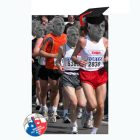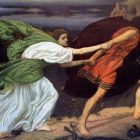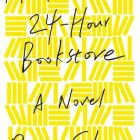Juneteenth and Some of Its Books
Today is June 19. For those that don’t know, this is a holiday celebrated in some parts of America as Juneteenth. Also known as Freedom Day, it marks the day that the Union army arrived in Texas in 1865 and actually enforced the Emancipation Proclamation, more than two years after it was declared.
Juneteeth, famously, is also the name of the incomplete second novel that Ralph Ellison spent his last forty years working on, which has been published in two edited versions, the more complete one called Three Days Before the Shooting. So we thought now would be a good time to talk about some of the literature that has risen out of the African-American experience and spoken to all of us.
One of the best novels I have read recently is Edward P. Jones’s The Known World. (I am proud to say that Ploughshares published one of his very first stories. I also highly recommend this essay Jones wrote for Powell’s on why writers might continue to write even in the face of constant rejection.) But back to the book: The Known World explores slavery from a number of angles, including one I had never known about before, which is the strange case of black slaveowners.
One of the book’s indelible scenes involves a white slaveowner who loses both his slaves and family to an epidemic. When he leaves his estate, he sets the whole place on fire and finds that the slave quarters will not burn down. His own house, which is filled with pianos and furniture and various luxuries forms a roaring blaze and is soon reduced to ashes, but the slave cabins, which are almost empty of items, simply get charred and remain standing.
It is an image both of resilience and privation—and also of how those two things might be related, one of the many complicated insights in this many-sided book. It reminded me of a passage from Roll, Jordan, Roll: The World the Slaves Made, by Eugene Genovese, an enormous book on slave life and culture which I just started a few days ago: “Many years of studying the astonishing effort of black people to live decently as human beings even in slavery has convinced me that no theoretical advance suggested in their experience could ever deserve as much as attention as that demanded by their demonstration of the beauty and power of the human spirit under conditions of extreme oppression.” —Akshay Ahuja, Production Manager
My pick would be “Miscegenation” by Natasha Trethewey, which begins: In 1965 my parents broke two laws of Mississippi; / they went to Ohio to marry, returned to Mississippi. The poem has stayed with me since I read it in a class with Michael S. Harper. As a descendent of some original Puritans, I cannot relate to Natasha’s situation personally, and yet the poem brought me into complicit understanding, while also raising more questions. She exposes, under a dirty, sinful title, the struggles of a mixed-race life in an elegant but no-nonsense way. Read aloud, the poem reveals touches of jazz, of bitterness and universality, especially when it is Michael S. Harper himself who is reading it. Beyond that, the entire anthology of African-American poetry edited by Michael S. Harper, Every Shut Eye Ain’t Asleep, might be one of the more powerful collections of poetry I’ve read. —Belle Cushing, Editorial Intern
I read Incidents in the Life of a Slave Girl by Harriet Ann Jacobs in my American Women Writers course at Emerson. This novel is highly autobiographical, written by Jacobs under the pen name Linda Brent, and details her life, her struggles, and the difficult choices she had to make in order to save herself and her children from the atrocities of slavery. It’s an intense and heartbreaking account of the horrors enslaved women had to face, made even more so for the truth within it.
Also, A Raisin in the Sun by Lorraine Hansberry. It’s a play about the Younger family struggling in south Chicago during the late fifties, as the head of house Walter desperately seeks wealth to rescue his family from poverty. I also read this book in my American Women Writers course and I found it fascinating. It’s an encapsulation of the quest for the American dream, bringing to life vivid and compelling characters the audience can’t help but empathize with. —Jordan Stillman, Editorial Intern
“I have no qualms admitting that when I first read Invisible Man, as a seventeen-year-old freshly arrived in the U.S. from Britain, where I had been exposed to precisely zero literature of the African-American experience: I was confused. When I saw the book on the reading list for the lit class I was taking, I thought it was going to be about an actual invisible man (I think I assumed it was what the movie The Invisible Man was based on).
By the end of the book (and after several withering lectures on it from my instructors), I had of course realized that ‘Invisible Man’ was, you know, a metaphor—but it wasn’t until grad school, when it was on the reading list for another class, that I re-read it from the start and really came to appreciate how powerful a metaphor it is.” —Andrew Ladd, Blog Review Editor
There is so much beautiful writing to choose from. My mind immediately goes to Zora Neale Hurston‘s Their Eyes Were Watching God—even though it’s been years since I read it, I can still see and feel the flood coming out of those pages. I also gravitate towards James Baldwin‘s essays—really, any of them; it’s hard to go wrong. And of course Beloved and the rememory, from Toni Morrison.
A (maybe odd) favorite: I can’t help but love Harriet Beecher Stowe and her Uncle Tom’s Cabin. I really started loving it after so many classmates railed against it, in the way that many people do, so I had to work hard to defend it, and because I had also just taken a class on the poetry of protest and witness. Stowe toes a very subtle line between sentimentality and the rhetorical employment of sentiment by way of moral suasion. As she attempts to answer the question—”But what can any individual do?”— she moves the heart (as readers expected) but also engages the mind, not just through direct address, but also in utilizing various character types who serve as either attractive role models or as unattractive negative models. (I think Uncle Tom’s Cabin was when I first fell in love with rhetorical analysis…)
And, finally, Sonia Sanchez. I could get lost in Morning Haiku for hours, and I’d take any opportunity to return to this collection, to the very real ghosts she calls up. Although words can only take us so far, I’ll leave you with a couple stanzas from “14 Haiku (for Emmet Louis Till)”:
we taste the
blood ritual of
southern hands
…
say no words
time is collapsing
in the woods
…
your death
a blues, i could not
drink away.
—Abby Travis, Editorial Assistant
So, everyone, your turn! What are some of your favorites, and why? Any recommendations? We’d love to read what you have to share in the comments.



